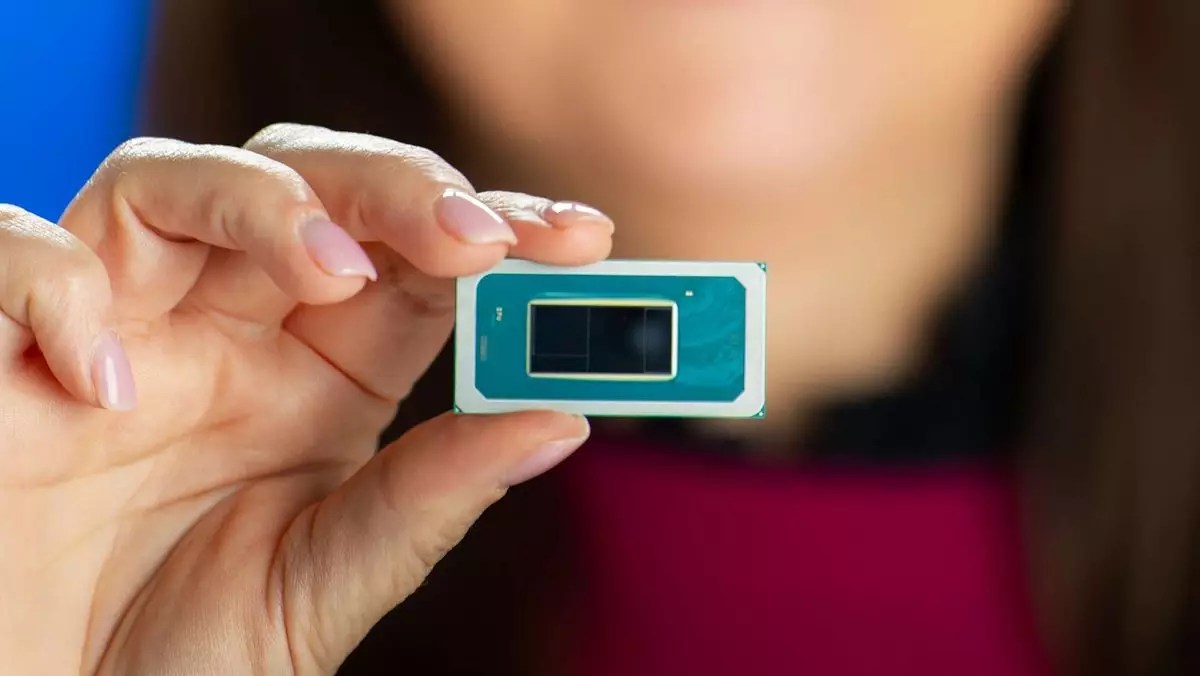Intel has recently made a significant step forward in enhancing the gaming performance of its integrated graphics processing units (iGPUs). By technically unifying its Arc discrete and integrated graphics drivers, Intel has ensured that the performance optimizations seen in its Arc A750 and A770 GPUs will also benefit its new integrated GPUs. This move comes alongside the announcement and release of Intel’s Core Ultra series of laptop chips, which mark the company’s first venture into chiplet architecture and offer a major upgrade in terms of graphical prowess.
The core component of Intel’s new laptop chips is the Meteor Lake graphics tile, which features up to eight new Xe LPG cores. This puts Intel’s integrated graphics roughly on par with AMD’s 780M iGPU found in the Ryzen 7 7840U. In fact, Intel claims to have a 10% average frame rate lead over AMD’s iGPU, offering excellent 1080p gaming performance. However, to fully take advantage of this improved gaming experience, it is essential to stay up to date with driver updates.
Importance of Driver Updates
Intel has demonstrated a commitment to enhancing the gaming performance of its GPUs through regular driver updates. Recent updates for the Arc GPUs have delivered significant boosts in frame rates, with an October release offering up to 119% higher frame rates and a November update specifically improving Halo performance by up to 750%. These updates have been crucial in closing the performance gap and ensuring smoother gaming experiences.
Historical Challenges with Laptop GPU Drivers
One challenge faced by laptop users is the limited ability to update their iGPU drivers. Laptop manufacturers often restrict their machines to their own OEM drivers, which tend to lag behind the latest GPU driver updates. In the past, this has meant that users had to resort to low-level tweaks to overcome these restrictions.
Unlocked Generic Drivers
However, Intel is now introducing an “unlocked” generic driver that allows users to update their laptop’s iGPU drivers themselves. This driver contains all the base performance optimizations and game day one patches that users desire. Intel provides this generic driver on its website for download and installation. While this unlocked driver does not include OEM customizations, it ensures that users can still benefit from the latest performance improvements.
It is important to note that opting for the generic driver may result in the loss of specific OEM features and functionalities. For example, the “Endurance mode,” designed to lock frame rates at 30 fps when running on battery power, may not be available with the generic driver.
The introduction of the unlocked generic driver allows users to address performance issues promptly. If an Intel GPU-specific problem arises with a new game, Intel can release an early hotfix to resolve the issue. Users can then update to the specific driver tailored to their laptop model at a later stage, ensuring a comprehensive and optimized gaming experience.
According to Intel’s Tom Petersen, the ultimate goal is to automate the process of driver updates, making it seamless and efficient. However, at present, there is still a reliance on the collaboration between GPU driver developers and OEMs to provide a complete solution for notebooks. Intel’s solution is to expedite the OEM validation phase, enabling users to have timely access to the latest driver updates.
Intel’s integration of Arc discrete and integrated graphics drivers marks a significant leap forward in improving the gaming experience on its new integrated GPUs. The release of the Core Ultra series of laptop chips showcases Intel’s commitment to enhancing graphical prowess through the adoption of chiplet architecture. By providing unlocked generic drivers, Intel empowers users to stay up to date with the latest driver updates and benefit from performance optimizations. While some OEM-specific features may be sacrificed, the ability to address performance issues promptly and optimize gaming performance is a significant step forward. As Intel continues to collaborate with OEMs and push for faster validation processes, the future holds the promise of automatic and seamless driver updates for an unparalleled gaming experience.


Leave a Reply